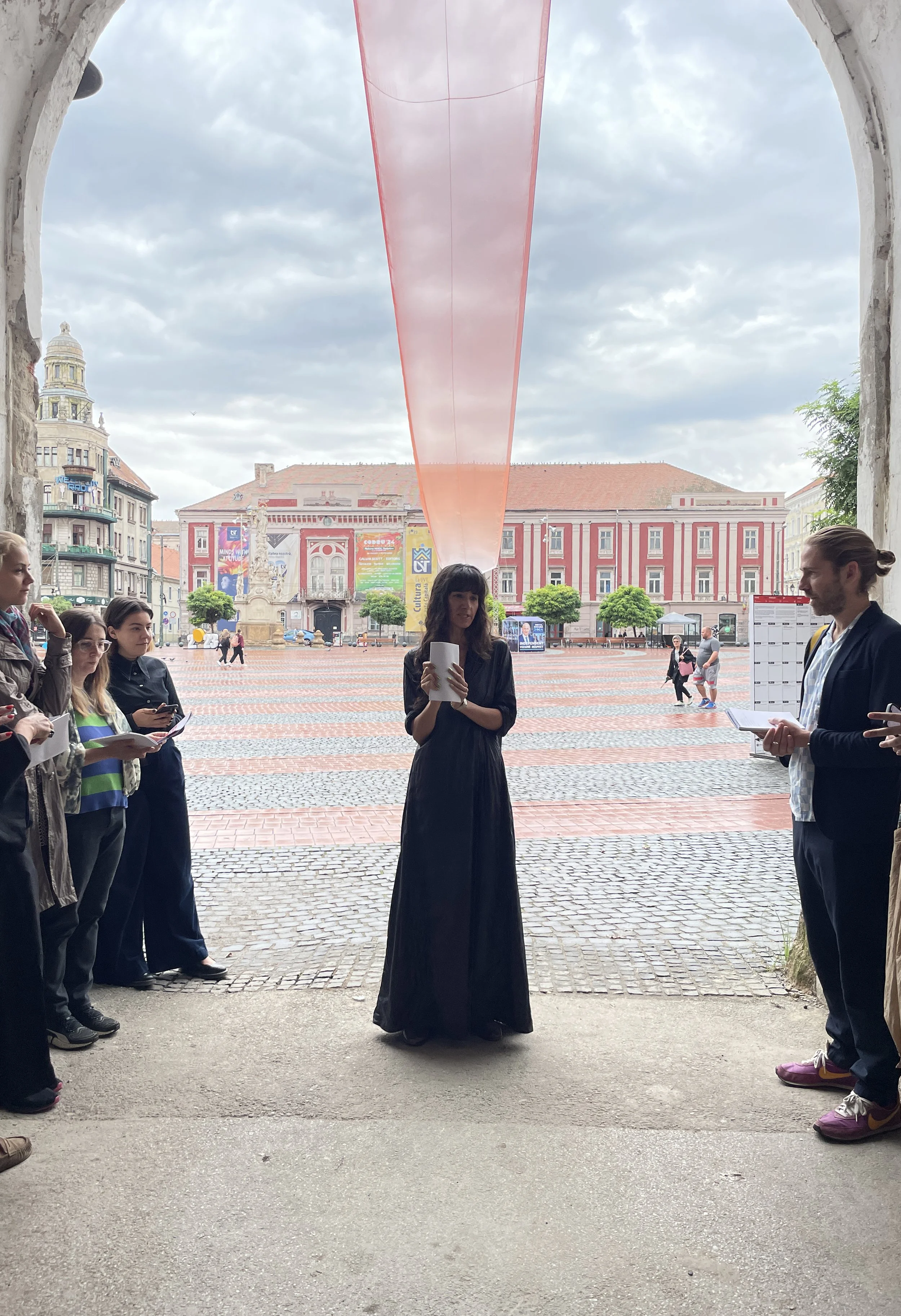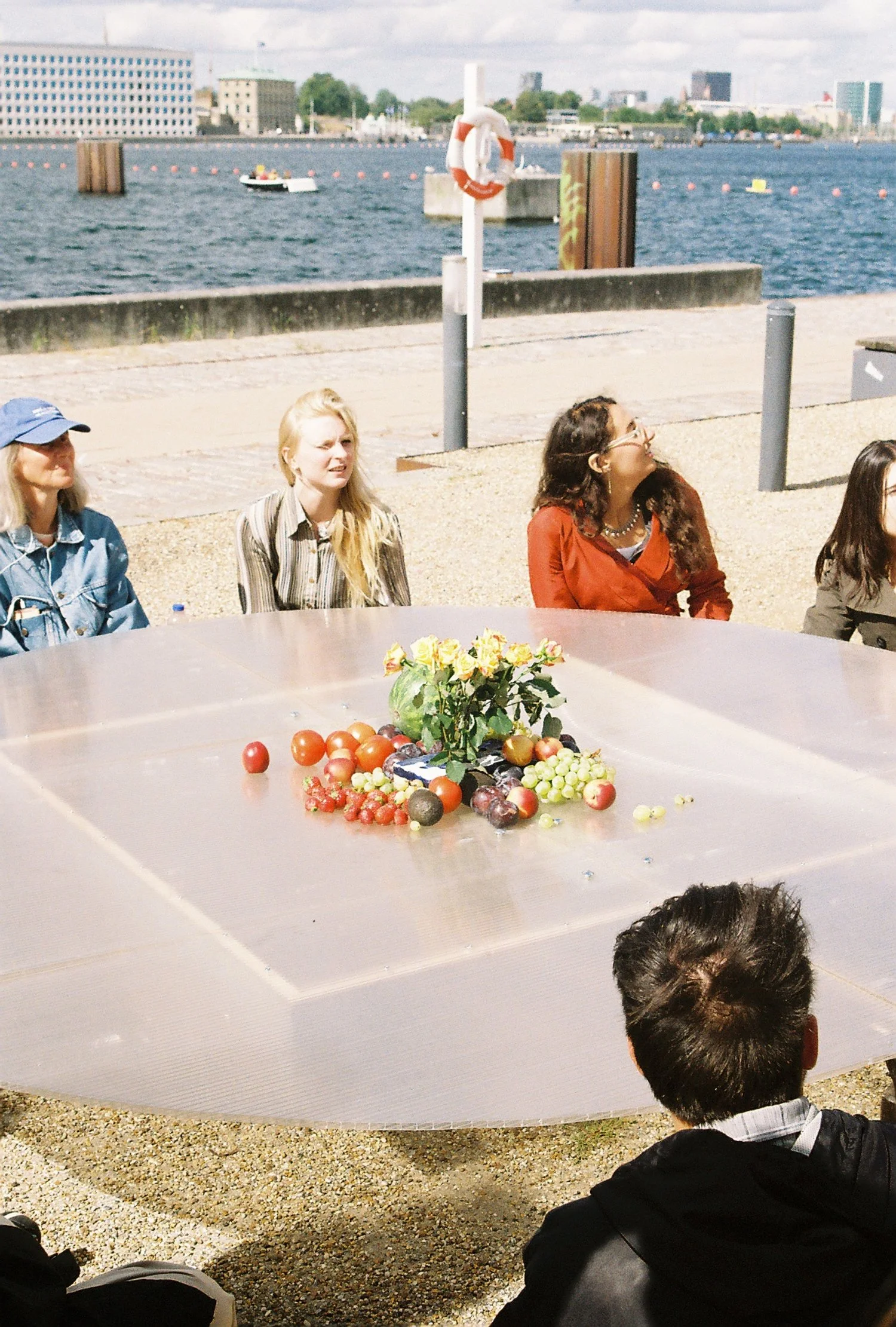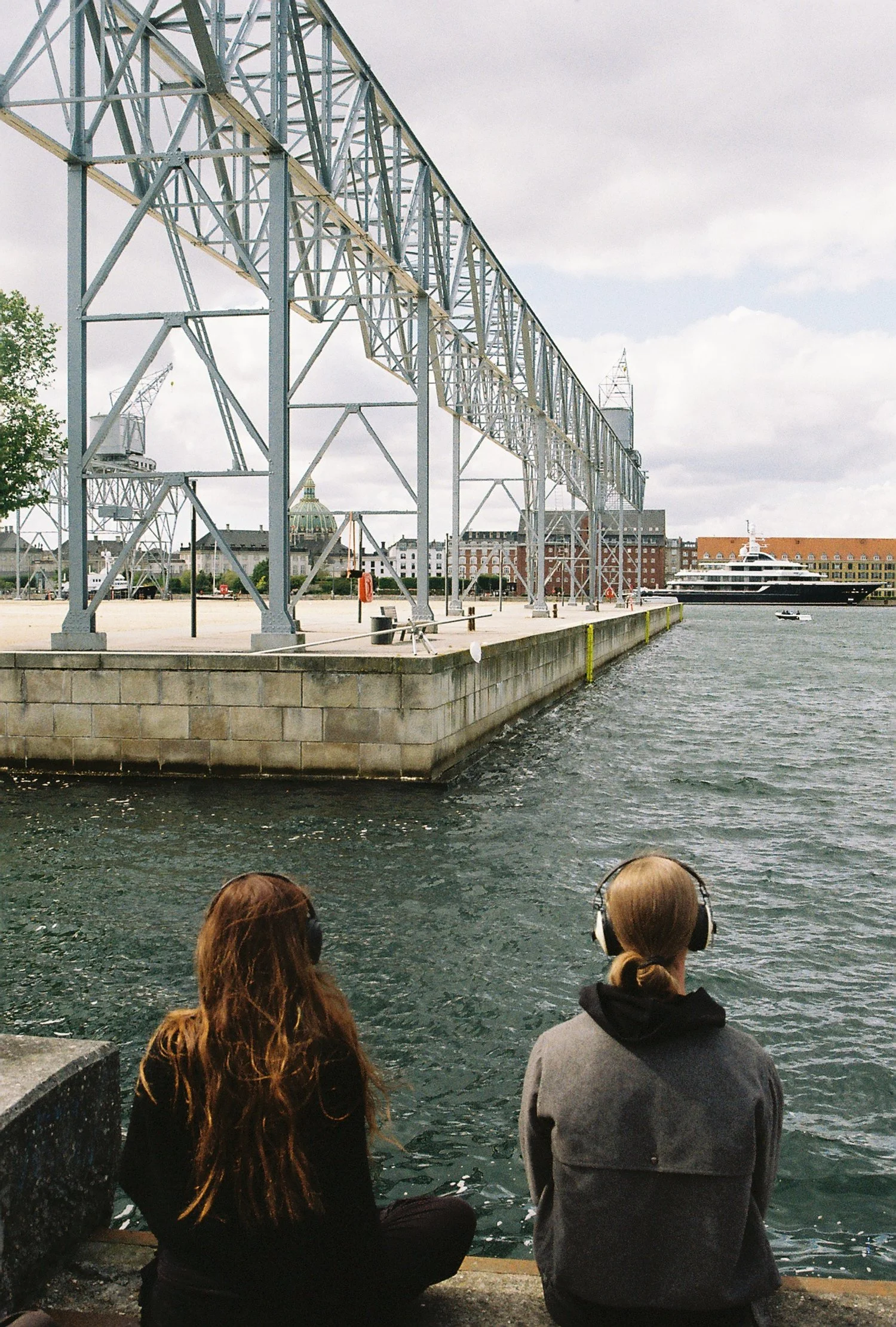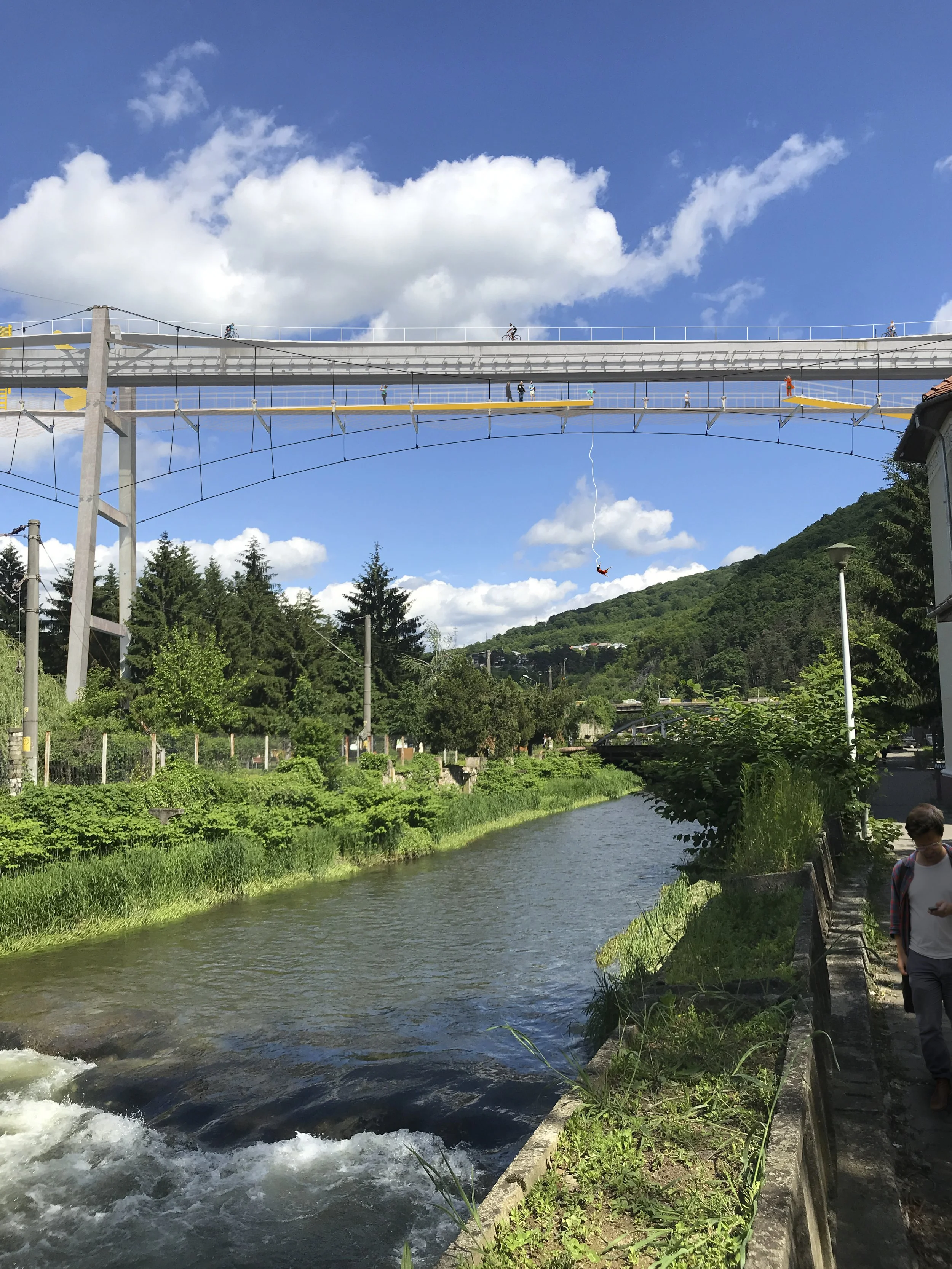Oana Stănescu
This interview was conducted during the Paraply Summer School in Copenhagen, August 2025.
Oana Stănescu was one of three workshop leaders at the 2025 Paraply Summer School, which focused on the overarching theme Load. Oana’s workshop in particular emphasized the senses, encouraging careful observation and moments of pause, followed by minimal interventions designed to heighten sensory perception.

Fresa, © Concentrico
#1 Can you shortly explain your practice for an introduction?
I have an eponymous practice with projects that range from furniture to urban infrastructure. I also curate, write and teach. My work is often described as a transdisciplinary practice, in the sense that I'm interested in exploring space through different mediums, languages, and disciplines.
#2 What lies at the core of your approach and way of working?
I am invested in the importance and potential of space, and am driven by curiosity and collaboration. I had a very pragmatic education, but then architecture really became my passport to the world. This helped me understand its malleability and crave the freedom to shape my own practice in my own way.
People spend most of their time in artificially created environments that are defined as much by laws, standards, economic pressures, and socio-cultural norms, materials, and media as they are by desires and dreams. Through my work I got to explore how space plays a key role in people’s lives, not as the main actor but through the way it reflects and shapes culture. Few disciplines share such a privilege and responsibility.






Beta2024, © Marius Vasile
#3 You are a workshop leader at Paraply Summer School. Could you describe the brief for the participants? Does it relate in some way to the city of Copenhagen?
When you arrive, you only know as much about a city as your previous encounters allow — maybe you've been there once before, but of course there are many layers to it. In this case, the setup was quite specific: you have one week, limited resources, and you're working on a site you are not particularly familiar with.
The aim was to challenge our typical reflex as architects — to immediately create ar object or build something for the sake of building. Instead, I invited the students to focus on the experience and perception of space. To allow ourselves to really feel the place and to learn by exploring it in perhaps atypical ways. We worked with the idea of minimal intervention - how you can shift the perception or experience of space with the smallest of gestures.
My goal was to resist rushing into doing something simply for the outcome — or for the final photograph while simultaneously avoiding leaving more trash behind. Rather, we tried to buy ourselves time: to sit, to observe, and to understand a space that we would otherwise only have very little time to engage with, in a hopefully more meaningful way.
Paraply, © Caroline Steffen
#4 The next question might already be partly answered, but what would you like the participants to take away from your practice — is it about observing and taking time?
I think everyone will take away something different. For me, the collective aspect — shared forms of togetherness while maintaining individuality, and then finding forms of shared collectivity — is just as important as anything else. It has less to do with my own practice; rather, what I’m inviting them to do is, in many ways, to be critical about architecture and their own practice, while also trying things differently.
It’s really about expanding horizons and constantly questioning the means and tools we usually work with — interrogating the practice at large. I don’t think it’s an easy moment in time to become an architect, but it feels valuable to be in a place like Copenhagen, or Denmark more broadly, which at the moment seems perhaps more politically outspoken than many other places in the world.





Paraply, © Samuel Causse
#5 Is there something you will take away from this workshop?
It's a really special summer school, and much credit goes to the organizers.
Ultimately, they set the stage, and their spirit shines through in everything that happens. It's been wonderful to have such a diverse group of students from all corners of the world.
The vibe has been amazing — both the openness with which the organizers approach the program and the students' backgrounds and willingness to try different things in such a short period of time. It's always inspiring to engage with the very different contexts and experiences everyone brings, and they have truly embraced it.
#6 From your perspective, which questions and ideas are most urgent for the next generation of architects?
Honestly, for me it's more closely tied to politics more than anything else. Architecture is often seen as something separate, but many of the challenges the profession is complicit in — climate change, inequality, demolition - must be understood within a specific context. At the same time, we depend on a globalized industry and global forces, even if we operate in our own small contexts. The power for me lies in the specificity of different localities, even when architectural discourse is largely driven by spaces ignorant thereof. This probably reflects a frustration with architects being too often part of the privileged structures of the world, and, maybe worse, arrogant enough to pretend they are not.
I guess what I am trying to say is that the next generation of architects will have to face like no other the diminishing role of the architect, but I would hope within that sobriety comes clarity regarding the roles that they want to be playing.
#7 What is inspiring you at the moment?
This morning, it was coffee (laughs). More seriously, the workshop itself is inspiring because it's refreshing to give ourselves the chance to simply stand still for a moment and observe. By observing anything, you learn something not just about the environment, but about yourself.
Today's pressures - to constantly produce images of projects and ourselves alike - make it particularly valuable to be invited into a new environment, to allow ourselves the luxury of time and space, including each other’s company. I did not expect it to face so much resistance, or to be this hard. Maybe a detox was necessary, but I am always fascinated by how far currents can take you, and the effort required to instead get closer to yourself. It seems strangely terrifying in its simplicity.

Funicular Bungee, © OS Studio & D Proiect
Links Oana Stănescu
Instagram: @oooooana
Website: oanas.net
Links Paraply
Instagram: @paraply
Website: paraplyschool.com
Images by: © Concentrico, © Marius Vasile, © Caroline Steffen, © Samuel Causse and © OS Studio & D Proiect
Interview by Caroline Steffen













